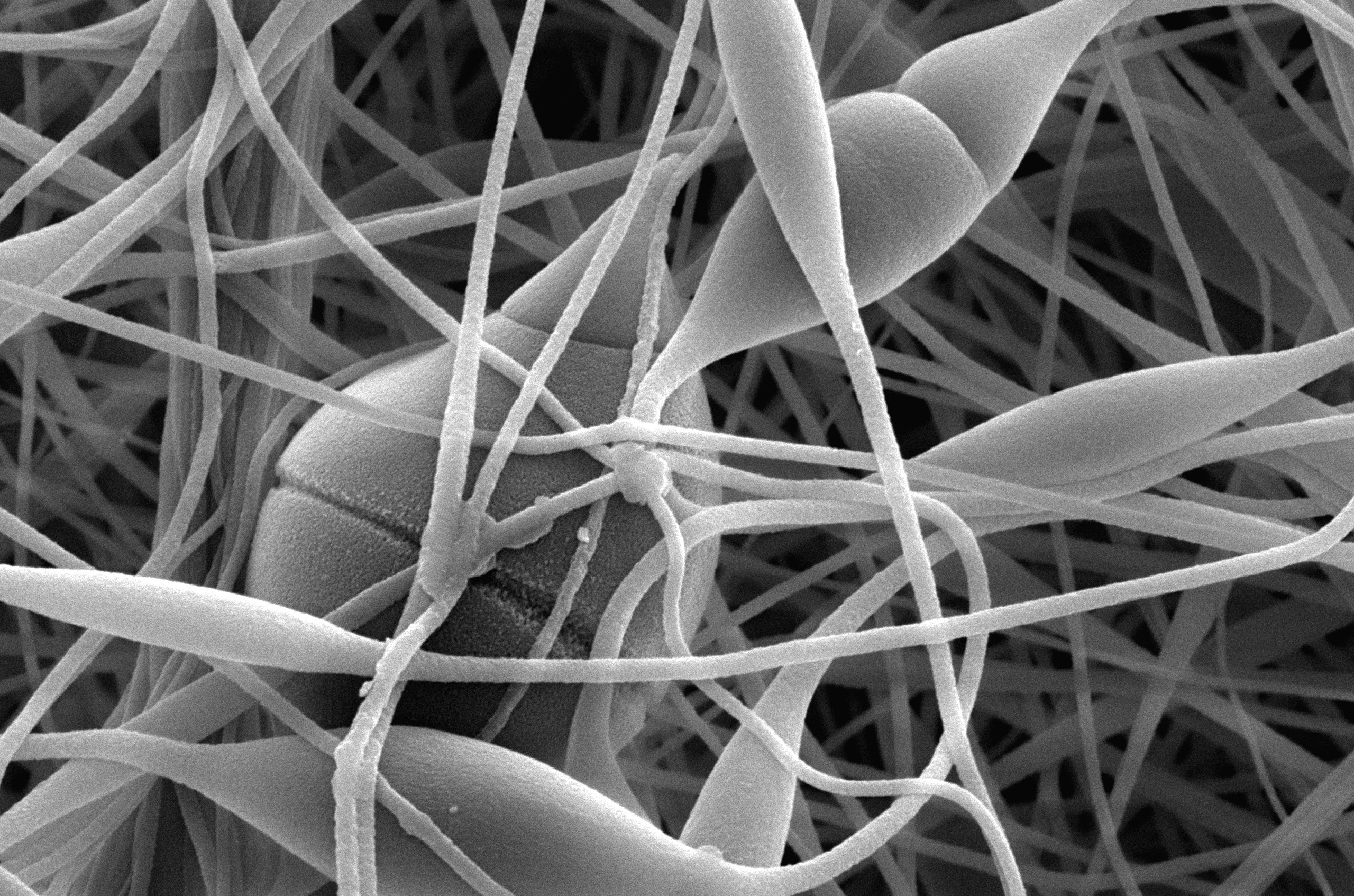Novel Bioabsorbable Membranes for Cell Delivery Applications
Methods for storing viable cells and for delivering viable cells to a mammal using the cell storage and delivery system.
Methods and compositions for encapsulating core materials, e.g., materials containing drugs, have been disclosed. These methods generally involve encapsulating the core material within a micro capsule by forming a semipermeable membrane around the core material. Although a number of processes for micro encapsulation of core material have been developed, most of these processes cannot be used for pH, temperature or ionic strength-sensitive material such as viable cells because of the harsh conditions necessary for encapsulation. Thus, there is a need for improved cell storage and delivery systems which can be produced on an industrial scale, which do not have the above-mentioned disadvantages.
Bio-absorbable polymer membranes are processed by a unique electrospinning technology. The cells can be embedded into the nanostructured membrane during processing. The cell density and the morphology of the membranes can be controlled. The polymer membranes, as a scaffolding material, thus provide the support for localized cell release and growth. These cell-embedded biodegradable membranes may have wide applications in tissue engineering and gene therapy.
 Please note, header image is purely illustrative. Source: Judyta Dulnik, Wikimedia Commons, CC BY-SA 4.0.
Please note, header image is purely illustrative. Source: Judyta Dulnik, Wikimedia Commons, CC BY-SA 4.0.
- The Biodegradable membranes provides a support matrix to encapsulate virtually any type of cell (e.g. bone, skin, tissue, and stem) allowing them to be delivered into a specific area. - The cell density, the diameter of fibers, the porosity of the membrane, and the degradation period can be fully controlled by tuning processing parameters. - The cell loading efficiency can be more than 90%.
Tissue engineering and gene therapy. Support matrix to encapsulate virtually any type of cell. Cell delivery top a targeted area
Patented
8,021,869 7,323,190
Available for Licensing.
Licensing
Patent Information:
| App Type |
Country |
Serial No. |
Patent No. |
Patent Status |
File Date |
Issued Date |
Expire Date |
|